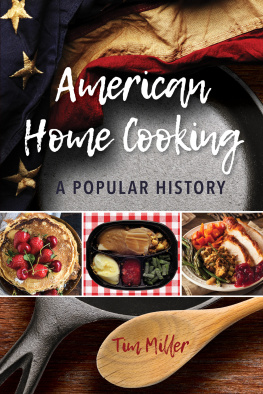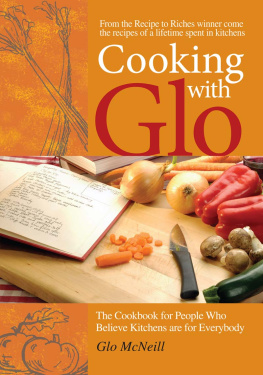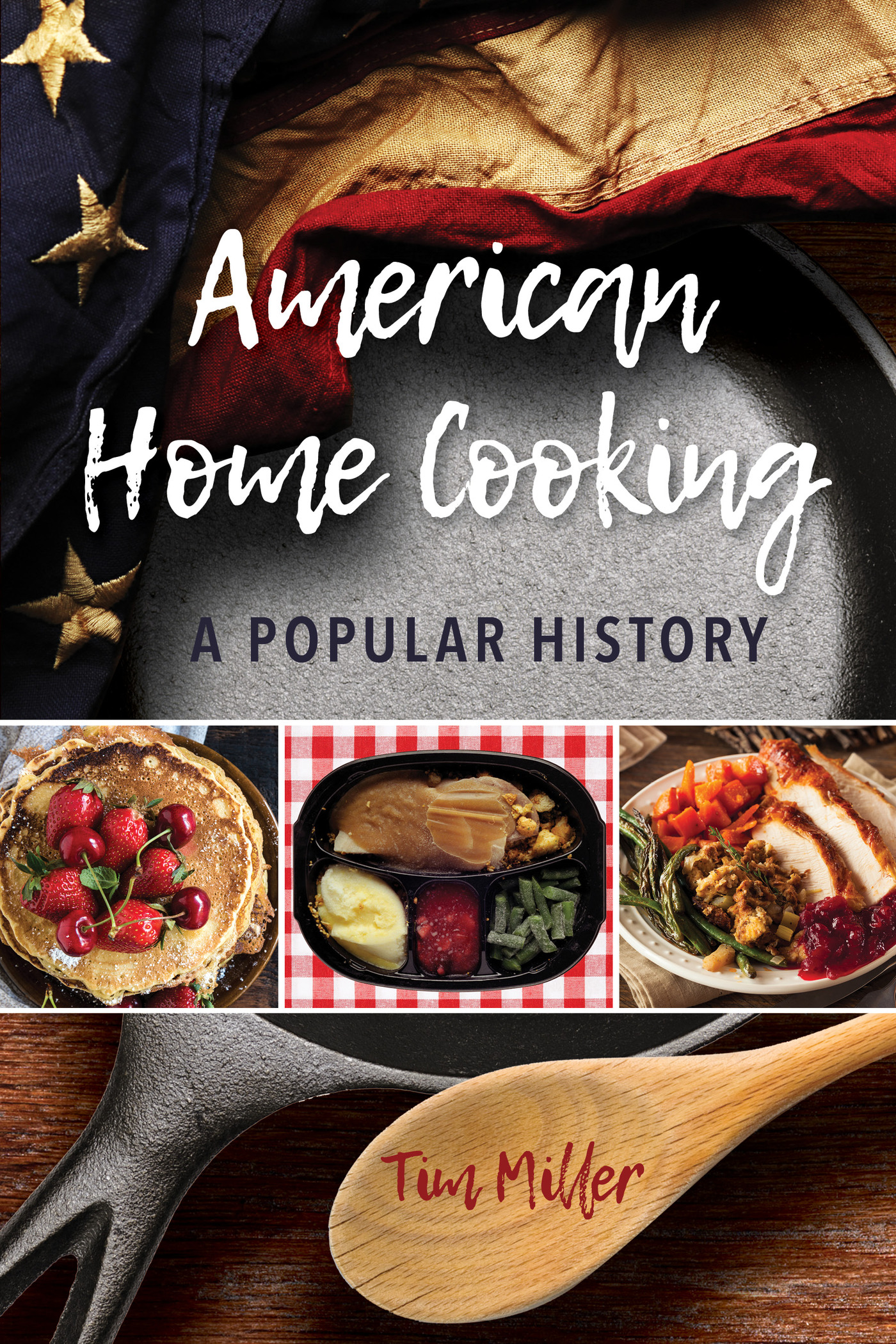American Home Cooking
Rowman & Littlefield Studies in
Food and Gastronomy
General Editor:
Ken Albala, Professor of History, University of the Pacific (kalbala@pacific.edu)
Rowman & Littlefield Executive Editor:
Suzanne Staszak-Silva (sstaszak-silva@rowman.com)
Food studies is a vibrant and thriving field encompassing not only cooking and eating habits but also issues such as health, sustainability, food safety, and animal rights. Scholars in disciplines as diverse as history, anthropology, sociology, literature, and the arts focus on food. The mission of Rowman & Littlefield Studies in Food and Gastronomy is to publish the best in food scholarship, harnessing the energy, ideas, and creativity of a wide array of food writers today. This broad line of food-related titles will range from food history, interdisciplinary food studies monographs, general interest series, and popular trade titles to textbooks for students and budding chefs, scholarly cookbooks, and reference works.
Titles in the Series
Appetites and Aspirations in Vietnam: Food and Drink in the Long Nineteenth Century, by Erica J. Peters
Three World Cuisines: Italian, Mexican, Chinese, by Ken Albala
Food and Social Media: You Are What You Tweet, by Signe Rousseau
Food and the Novel in Nineteenth-Century America, by Mark McWilliams
Man Bites Dog: Hot Dog Culture in America, by Bruce Kraig and Patty Carroll
A Year in Food and Beer: Recipes and Beer Pairings for Every Season, by Emily Baime and Darin Michaels
Celebraciones Mexicanas: History, Traditions, and Recipes, by Andrea Lawson Gray and Adriana Almazn Lahl
The Food Section: Newspaper Women and the Culinary Community, by Kimberly Wilmot Voss
Small Batch: Pickles, Cheese, Chocolate, Spirits, and the Return of Artisanal Foods, by Suzanne Cope
Food History Almanac: Over 1,300 Years of World Culinary History, Culture, and Social Influence, by Janet Clarkson
Cooking and Eating in Renaissance Italy: From Kitchen to Table, by Katherine A. McIver
Eating Together: Food, Space, and Identity in Malaysia and Singapore, by Jean Duruz and Gaik Cheng Khoo
Nazi Hunger Politics: A History of Food in the Third Reich, by Gesine Gerhard
The Carrot Purple and Other Curious Stories of the Food We Eat, by Joel S. Denker
Food in the Gilded Age: What Ordinary Americans Ate, by Robert Dirks
Food Cults: How Fads, Dogma, and Doctrine Influence Diet, edited by Kima Cargill
As Long As We Both Shall Eat: A History of Wedding Food and Feasts, by Claire Stewart
American Home Cooking: A Popular History, by Tim Miller
American Home Cooking
A Popular History
Tim Miller
ROWMAN & LITTLEFIELD
Lanham Boulder New York London
Published by Rowman & Littlefield
A wholly owned subsidiary of The Rowman & Littlefield Publishing Group, Inc.
4501 Forbes Boulevard, Suite 200, Lanham, Maryland 20706
www.rowman.com
Unit A, Whitacre Mews, 26-34 Stannary Street, London SE11 4AB
Copyright 2017 by Rowman & Littlefield
All rights reserved. No part of this book may be reproduced in any form or by any electronic or mechanical means, including information storage and retrieval systems, without written permission from the publisher, except by a reviewer who may quote passages in a review.
British Library Cataloguing in Publication Information Available
Library of Congress Cataloging-in-Publication Data
Names: Miller, Tim (Timothy Jon), 1970 author.
Title: American home cooking : a popular history / Tim Miller.
Description: Lanham [Maryland] : Rowman & Littlefield, [2017] | Series: Rowman & Littlefield studies in food and gastronomy | Includes bibliographical references and index.
Identifiers: LCCN 2016057276 (print) | LCCN 2017000530 (ebook) | ISBN 9781442253452 (cloth : alk. paper) | ISBN 9781442253469 (electronic)
Subjects: LCSH: CookingUnited StatesHistory. | GastronomyUnited StatesHistory.
Classification: LCC TX360.U6 M54 2017 (print) | LCC TX360.U6 (ebook) | DDC 641.01/3dc23
LC record available at https://lccn.loc.gov/2016057276
 TM The paper used in this publication meets the minimum requirements of American National Standard for Information Sciences Permanence of Paper for Printed Library Materials, ANSI/NISO Z39.48-1992.
TM The paper used in this publication meets the minimum requirements of American National Standard for Information Sciences Permanence of Paper for Printed Library Materials, ANSI/NISO Z39.48-1992.
Printed in the United States of America
Acknowledgments
I would like to thank Ken Albala, the content editor for this series, and Suzanne Staszak-Silva, the editor at Rowman & Littlefield, for the opportunity to write this book. I had been thinking for some time about the state of home cooking in America, and this book has given me the chance to investigate the history of home cooking and write about it.
Introduction
This book is a history of home cooking in America, so it is probably good to begin with a definition of just what cooking is. Unfortunately, in the past century or so our definition of cooking has become quite complicated. Cooking exists on something of a continuum. At one end of the continuum is cooking from scratch, preparing (for example) a salad from ingredients gathered in a garden. Toward the other end of the continuum is making something like cheese dip, where the contents of a few cans are poured into a bowl, the bowl is warmed in the microwave, and the dip is ready to serve.
While this is a book about home cooking, a precise definition of cooking is not terribly important for the purposes of this book. This is not a book that strongly advocates a return to home cooking, nor is it a eulogy for the demise of home cooking. Rather, this is simply a history of home cooking written with the knowledge that cooking, like most other activities Americans have participated in over the past few hundred years, has changed with the times. Today everyone has their own definition of cooking, and that, in itself, is a part of the story of American cooking.
The work of cooking is done in the kitchen, so much of this book is focused on that room. Looked at historically, the kitchen is something of a strange room, a leftover from a much earlier time. A few hundred years ago, before factories came along, homes were centers of productionalmost everything was, literally, homemade. Clothes were homemade, starting with the gathering of the wool or flax and continuing with the spinning of the yarn, weaving of the cloth, and cutting and sewing of that cloth into clothes. Cheese and butter were made from milk taken from the family cows. Medicines were made from gathered and grown herbs. All of this was done within the home. Today the kitchen is the final remnant of all that production, the last place where we actually make something in the house. After we gave up making our own clothes, medicine, and everything else, we still have not given up cooking our own food.
There are, after all, perfectly good alternatives to making food. There are restaurants willing to sell us almost any kind of food we want. Grocery stores today do not just sell ingredients for foodthey sell finished food as well, and a well-stocked grocery store sells everything from Chinese and Mexican foods to pizza and salad, which customers can select from an extensive salad bar. Those same grocery stores sell foods that arent quite ready to eat but that require a minimum of work to finish. Frozen pizzas and TV dinners only require minutes in the microwave or oven, and frozen pasta needs no more than a quick dip in boiling water, with an accompanying packet of sauce that only requires warming. These foods need slightly more work than something taken from a restaurant, but far less work than food made from scratch.

















 TM The paper used in this publication meets the minimum requirements of American National Standard for Information Sciences Permanence of Paper for Printed Library Materials, ANSI/NISO Z39.48-1992.
TM The paper used in this publication meets the minimum requirements of American National Standard for Information Sciences Permanence of Paper for Printed Library Materials, ANSI/NISO Z39.48-1992.